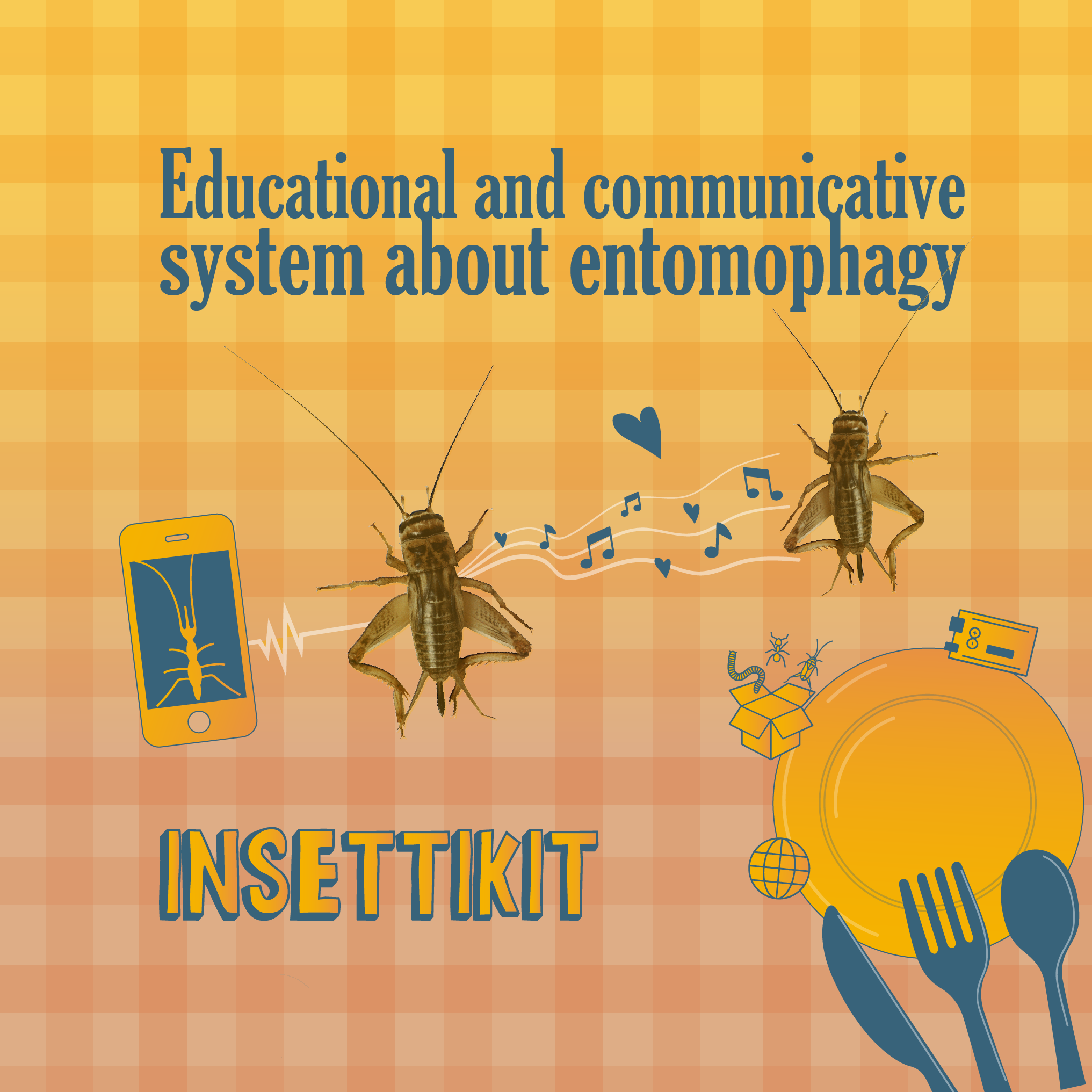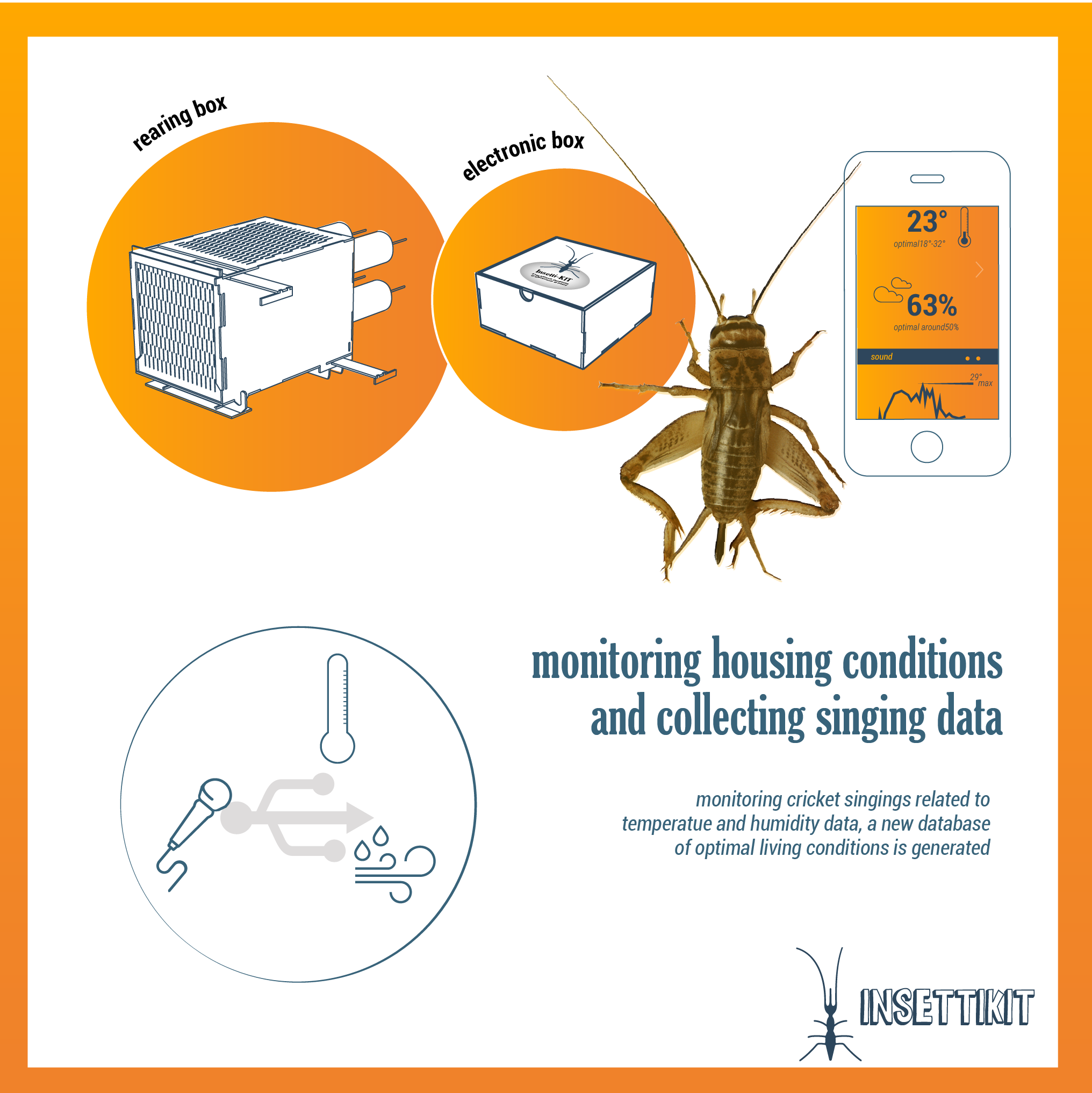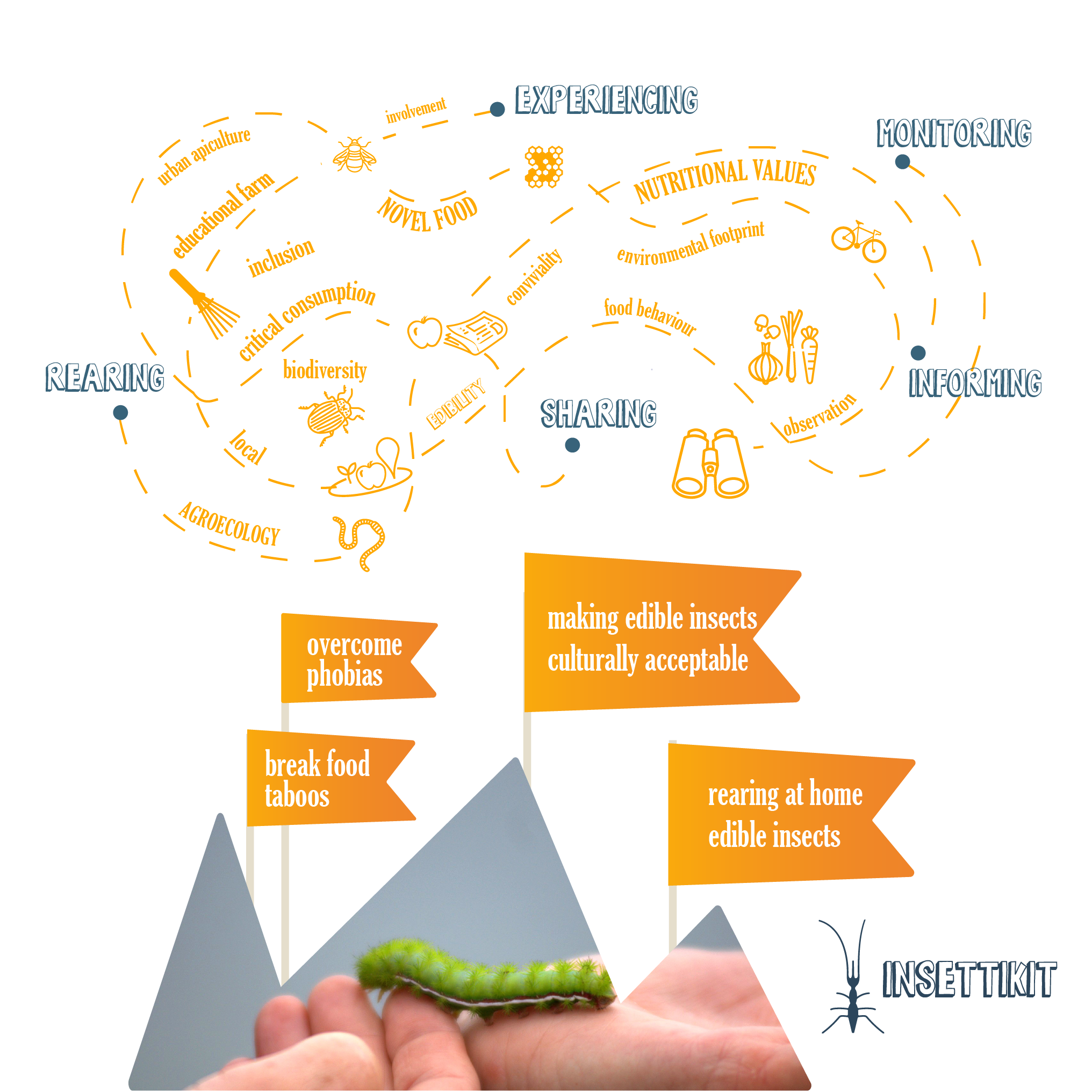insettikit

Useful information
- Team members
- giulia grattini
- Country
- Italy
- Keywords
- entomophagy edible insects slow food agro-ecology alternative food network relationship involvement
Short Description
Educational and communicative system about entomophagy
Detailed Description
FAO asserts edible insects are future food, thanks to their richness in protein, minerals, vitamins, and good fats; they spread worldwide, their reproduction is very quickly and massive, and in the Tropics edible insects is a very common and traditional food.
Furthermore, more and more people are shifting vegan because of the increasing attention to animal rights and wellness, and to climate change.
INSETTIKIT aims to arise in food education and in a critical conscience through a real activity of involvement in cricket breeding. Crickets sing for reproduction aims. If cricket need to reproduce, they are living in the right habitat.
Insettikit is composed of three tools: box for breeding crickets, an electronic box in which Arduino microcontroller is connected to temperature and humidity sensors and to a microphone. This is for recording frequencies and intensity of the cricket sing, as well as data resources for the creation of a database that can be used by future amateur breeders.
Project Details
- Does your design take social and cultural challenges and human wellbeing into consideration?
Inclusive activities are forecasted and set in a social and cultural city centre which already host similar activities. such as laboratory of insect manipulation, box realization, educational games about insects, collective cooking of edible insects, in order to overcome entomophobia (fear of insects). It is scientifically proved that defeating fears in a collective way is more effective.
For instance, architects, makers, designers, and students could take care of the box design phase; elementary school children could be followed by educators and agronomists in laboratory activities to approach the insect; guests of associations such as migrants, disabled people, retirees, and volunteers could take care of the maintenance of insects in the box, in parallel with the care of a urban garden.
- Does your design support sustainable production, embodying circular or regenerative design practices?
It fosters auto-production and food education with special focuses on local food, native species, and good practices such as limit meat consumption, and agroecology and permaculture promotion through insects observation and recognization.
- Does your design use principles of distribution and open source?
You can use the original box projects or customize them as you like the most.
With ARDUINO controller it matches temperature and humidity data with voice data collection (cricket sing: frequencies and times per day)in order to establish the right habitat for rearing crickets
- Does your design promote awareness of responsible design and consumption?
Boxes (breeding one and electronic one) are produced by digital fabrication (laser cut) whenever you need them.
Collective practices are promoted as a way to socialize and optimize the use of resources
Images


